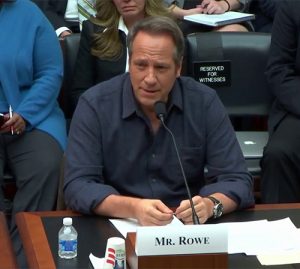
Attention K-12 Teachers! Do You Directly and Indirectly Support Technical Education?
America is currently facing its most significant skills gap in history. Take a minute to read the following article from NPR (National Public Radio), “High Paying Jobs Sit Empty, While High School Grads Line up for University.”
 Most everyone is familiar with Mike Rowe of “Dirty Jobs” fame. He has long recognized this skills gap and takes a very active role in trying to impact policy and practice. Mike has testified before congress on a number of occasions to make sure that they understand the critical nature of the skills gap and how policy and practice can impact the crisis. Take a moment to watch what Mike has to say.
Most everyone is familiar with Mike Rowe of “Dirty Jobs” fame. He has long recognized this skills gap and takes a very active role in trying to impact policy and practice. Mike has testified before congress on a number of occasions to make sure that they understand the critical nature of the skills gap and how policy and practice can impact the crisis. Take a moment to watch what Mike has to say.
Congress is not the only entity that needs to understand this information. What role do educators play or could they play in impacting this situation? It is critical that teachers at all levels recognize the importance and value of skilled trades AND make sure that they are providing “equal access” for students to learn about these careers. It is also imperative that educators communicate, directly and indirectly, to students that having an interest in post-secondary trade schools is equally admirable to interest in post-secondary college/university. Too often, we see scenarios like the one highlighted in the following article, “Discussing Career Plans with Students? Don’t Overlook the Skilled Trades.”
While this article targets a school counselor who clearly believes that “skilled trades” are the consolation prize in post-secondary options, classroom teachers may play an even bigger role in discouraging students from considering high-skilled, high paying jobs in sectors such as manufacturing. Classroom teachers spend a great deal more time with students than school counselors, and sometimes even parents. As a classroom teacher, do you directly or indirectly communicate to your students that college is the best option for their future? This is compounded by the fact that most teachers have little first-hand experience in industry and with skilled trades. Below is a list of some examples of how teachers can unknowingly be perpetuating the idea that college is superior to post-secondary skills training. The chart also provides suggestions for editing the practice to not bias students toward one training path over another.
| Current Practice | Edit the Practice |
|---|---|
| An elementary classroom decorated with college pennants | An elementary classroom that includes equal number of posters/pennants for college, technical schools, the military and some examples of on-the job training programs such as apprenticeships. |
| College Signing Day | Post-Secondary Commitment Day – equal status for students who are currently attending the CTC and receiving certifications, students accepted to community college, students going to the military,students who are headed to trade schools, and students who have job offers. |
| Career Posters in elementary schools that target primarily professional careers | Career Posters that represent the actual current jobs scenario (approximately 30 % Professional, 60% skilled, 10% unskilled.) |
| Classroom Speakers records indicate that 90% of speakers at the middle school were from professional careers | Systematically plan classroom speakers to make sure they more accurately represent the percentages above or at the very least provide equal time/status for all three categories. |
| Common question high school teachers ask kids in high school. “What college major are you thinking about?” | Edit that question to state “What type of post-secondary training would you like to accomplish when you graduate? |
| Career Fair with a preponderance of “high status” professional careers such as doctors/lawyers, etc. | Career Fair with careers representing all levels of post-secondary training. It is really important to give extra thought about what may be considered a low status profession such as “plumber.” Carefully selecting someone in that profession who is enthusiastic about that career is a great idea, or choosing a local plumber who is also a popular coach, can help kids (and their parents) view that career in a very positive light. |
| Lesson Plan Relevancy is primarily linked with professional careers. For example, a third grade geography lesson is linked to civil engineering. | Take that geography lesson and have a UPS driver provide a follow-up visit. |
These are just a few examples of subtle ways educators can impact perception about skilled trades vs professional careers. In order to self-assess how you represent all post-secondary options consider the following:
- How does your classroom reflect equal status for all post-secondary options?
- How do your lesson plans reflect equal status for all post-secondary options?
- How do you recognize and acknowledge your students when they discuss careers from all post-secondary options?
A final question to consider is how do you impact females in your classroom with regard to manufacturing. Read this brochure on best practices for recruiting and including females in STEM Programs and exposing them to Manufacturing Careers.
